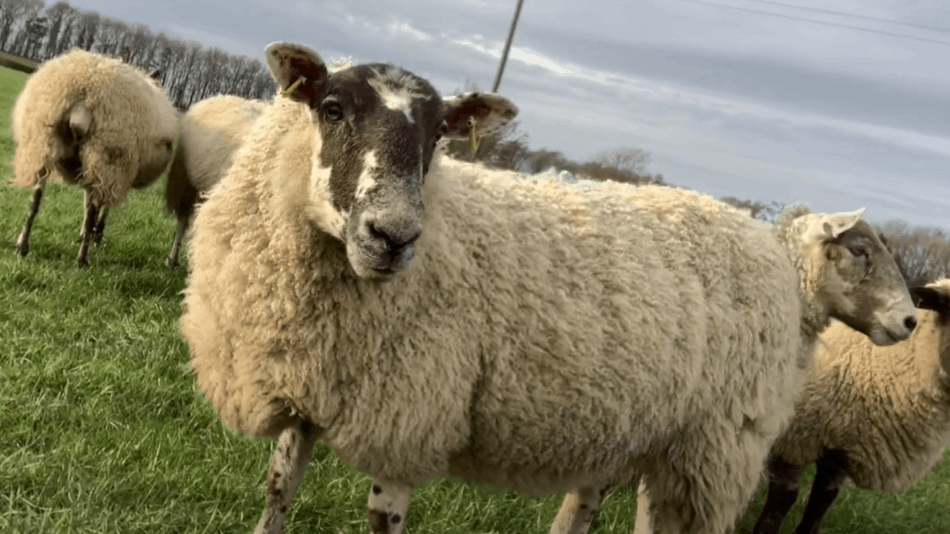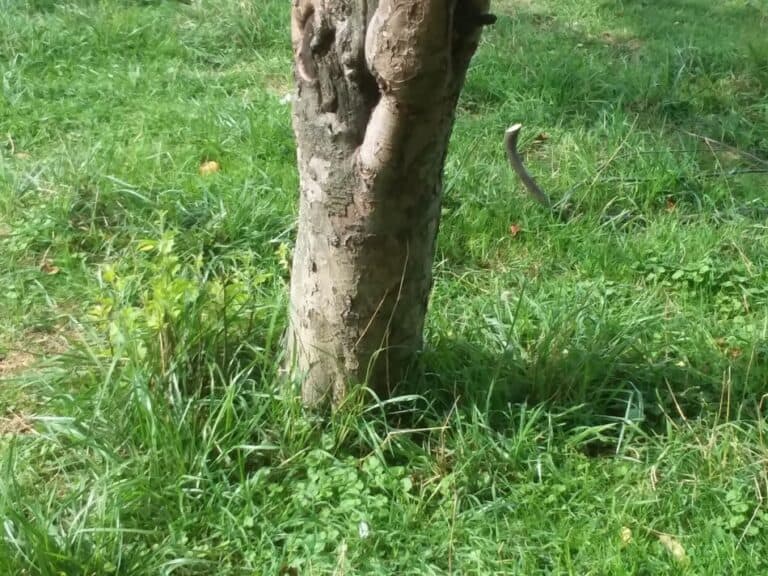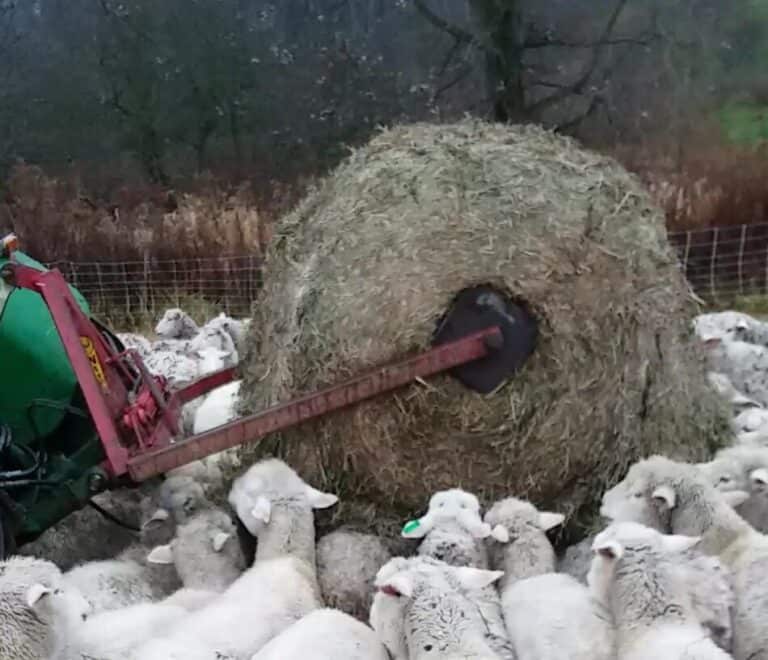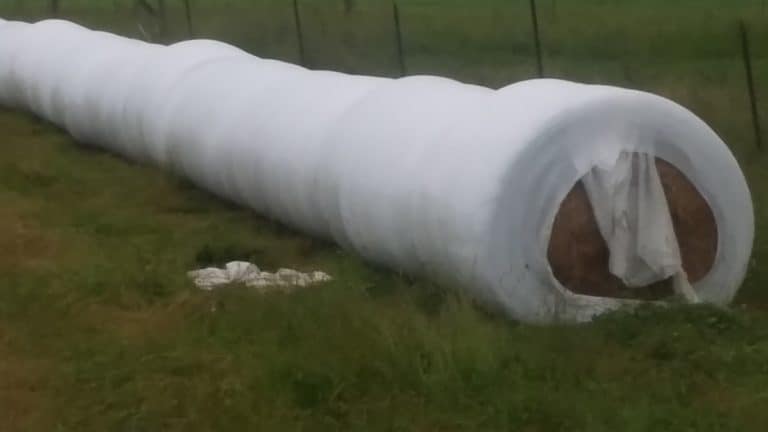What Happens To Farm Animals When They Die?

On any livestock farm, there will occasionally be an animal that dies. What do farmers do with the carcass, especially for something big, like a cow?
A dead farm animal carcass can be rendered, buried, burned, composted or left to feed wildlife.
It’s hard to hear, but sometimes, even dispite your best efforts an animal that you are caring for dies. Now what?
Determine if the death is a single event
Before you go any further, ask yourself, can whatever caused the animal to die spread to the rest of the herd? If so, call your vet ASAP.
If the animal died by making poor decisions, like head stuck in a feeder or a fence, poor body position, like bloat, or predation, now you have a carcass to deal with.
The carcass has value, if handled appropriately
Please notice that I am not using the word “dispose” regrading the carcass. Dispose means get rid of something with no value.
An animal carcass has quite a bit of value to you and your farm, when handled appropriately.
This means you are not ”disposing of the carcass” you are putting it somewhere that you can make use of it.
To be sure, I’d rather have the animal alive! But once it has died, the only way for me to make the best of a not so great situation is to know how to handle the carcass.
Take dead farm animals to a rendering plant
There are rendering plants throughout the country that take in all manner of materials, including farm animal carcasses.
Rendering plants take all kinds of dead animals, slaughterhouse and meat-packing castoffs, and restaurant oils and grease. They reduce these materials into oils, fats and proteins used in cosmetics, paints, pet food and livestock feed.
Columbus Dispatch, Closing Of South Side Rendering Plant May Reroute Roadkill
Search online for a local carcass rendering plant
This is one of the rendering plants in Ohio, Holmes By Products. You’ll find the closest rendering plant to you by searching “livestock rendering in your state”.
Back when we milked cows for a living, there was a local guy who you called when a cow died and he would come and get the carcass and take it to the rendering plant.
If there is a rendering service in your area, this is a service that you should expect to pay for.
Dead farm animals can be buried
To me, burying dead animals is the most common option. However, is it the best option?
Know the water table in your area before you bury deadstock
First off, how’s the water table in your area? Burying an carcass so that it is contaminating the local water table is not a good plan.
Deep burying puts the carcass below soil activity level
The other concern I have about burying an animal is that to put the carcass down in the ground 4 feet or so you are below the working level of the soil bacteria.
Unless, of course, you are incredibly fortunate to have really deep top soil!
Since having 4 feet (or whatever the local depth recommendation is) of top soil is unlikely, if you bury the carcass, you are putting it in too deep for the soil to easily use it.
This is why carbon based materials don’t rot in a landfill, they are too deep and below the level of microbial activity in the soil.
The point I’m trying to make here is that burying farm animal carcasses will lock up the nutrient potential of that carcass. Which does not do you or your farm any good.
If you want your farm to benefit from the nutrients available in the carcass, you need to bury the carcass in a shallow hole or compost it.
You can burn or incinerate dead farm animals
I have to admit, burning is more of a big ag type option, most people would have just went with burying.
Ask your vet how to handle burning a carcass
However, if your animal died of something that can spread to other animals on your farm, you need to watch what you are doing here.
The prudent option is to call your vet and see what you need to do with the carcass.
You need to ask not only how to completely burn the carcass, but what to do with the remaining debris pile.
You can compost dead farm animals
Composting dead farm animals is a great option for handling deadstock and keeping the nutrients working on your farm.
It won’t take a ton of space, but it will take some time and a lot of sawdust!
Composting Dead Animals is an article I wrote covering all of the details regarding livestock mortality composting. It also has links to articles with specific processes to follow, should you need them.
If you decide to compost a carcass, realize that you will need a substantial amount of sawdust both under and over the carcass.
You’ll also need at least 90 days of warm weather for the microbes to get going and break down the carcass.
As far as actually getting the animal into the compost, you’ll need some sort of loader to move the carcass over to the pile and lay it on top of the lower layer of sawdust.
Just dragging the carcass over and dumping sawdust on top won’t give you the complete carbon envelopment you want to compost correctly.
Then, of course, the carcass is generously covered with additional sawdust. The more sawdust, the merrier your results!
Leave dead farm animal carcass to feed wildlife
This is another not so popular option, but it is an option, especially for those livestock owners in a more remote area of the country.
Any animal that dies and is left in place will attract wildlife that will eat the carcass.
If you are comfortable with this option and the carcass is out away from the buildings and not causing some other problem, give it a shot.
Dead carcasses produce bug protein for chickens and fish
Some folks are using dead carcasses left to rot to produce food for bug eating domestic animals like chickens and fish.
How is this done? The most common way I am aware of is to suspend the carcass, or a part of the carcass, in the air in a wire mesh cage.
If your chickens can reach the carcass where it lies, you don’t have to do anything but wait. Chicken snacks are on the way!
Once the carcass is suspended, leave it alone and let the flies put eggs, soon to be maggots all over it.
Yikes, so far this sounds like a bad idea! True, if the process stops here, this is a mess.
But that’s not the case in this situation, we are wisely using a carcass to produce on our farm a usable protein that will supplement other omnivore animals.
When the maggots have grown enough to pupate, they have to drop off of the carcass and finish their life cycle on the ground. This is where the magic happens.
As soon as they drop, the maggots are eaten by the eagerly awaiting chickens, ducks or fish. Beautiful!
Of course, if you removed the chickens or fish from this situation all you are doing is raising flies!
As long as you are mimicking nature by having the eaters close at hand, those maggots are going to be the highlight of the day for your flock!
Feed dead farm animals to dogs
This one may be hard for people to read, (if there’s anyone left after the maggots to chickens part), but if you’re still with me, let me explain.
There are some animals that it would be inappropriate to sell as culls. For instance a ewe that is prolapsing or a heifer with a broken leg.
If you can get her back to normal, then of course, sell her. Until then, she’s not a good candidate for the sale barn, you’ll need to rehab her further.
The trouble is that not all of your efforts to save and reenergize a poor doer will work. Sometimes animals die, now what?
You can skin out and cut up any animal carcass that has recently died (and is unmedicated) for the dogs.
If you have used medication, you’d better think of another option. If the carcass smells, you’re too late. Compost it instead.
I hesitated to write this, but it’s important and real so I did. In case there are any lingering doubts, I would prefer to never have “free” dog food. It’s not free at all!
Any animal that we skin out for the dogs is us making the best use of a bad situation and providing great food for the farm dogs.





